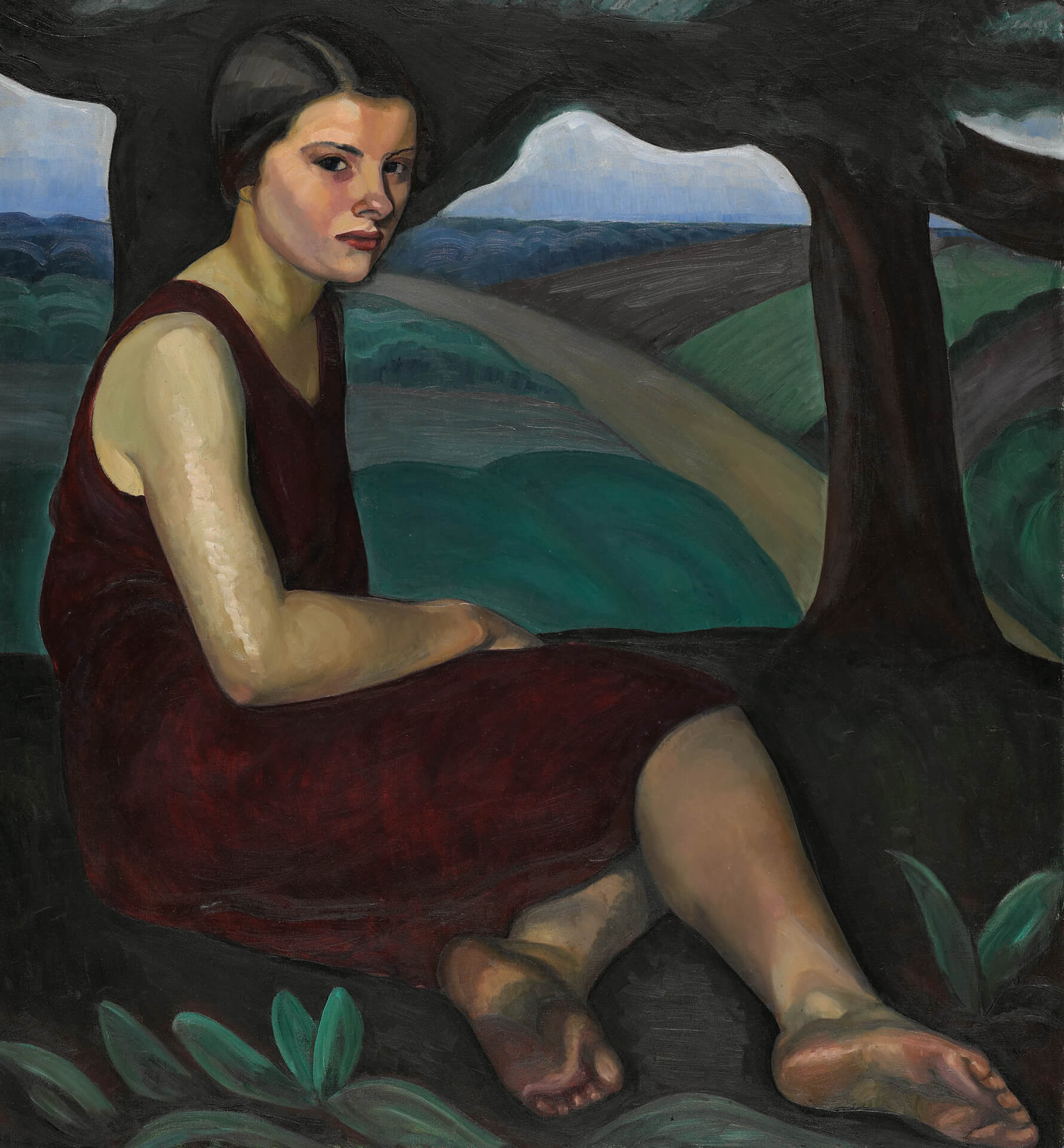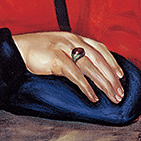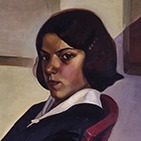Girl on a Hill 1928

Prudence Heward, Girl on a Hill, 1928
Oil on canvas, 101.8 x 94.6 cm
National Gallery of Canada, Ottawa

With this portrait of Montreal dancer Louise McLea, Heward positions herself as a modern artist depicting modern subjects. McLea is seated in a country landscape, her hairstyle and loose-fitting dress reflecting the more liberated fashions of the time. Modern dancers commonly dance barefoot, and McLea’s bare feet are in the foreground, their dirty soles adding a touch of realism to the work. Her reddened cheeks and nose suggest physical exertion, as though she has stopped to rest after a performance.
McLea looks directly at the viewer, but rather than facing us full-on, she turns her head only partway, her slightly wary expression accentuated by dark, unsmiling lips. As curator Charles C. Hill wrote in 1975, Heward “portrays strong, independent women, women with individual lives and personalities, yet there is always a certain tension in her work.” This is one of many paintings by Heward that represent women as complex subjects who do not seek to please the viewer.
Girl on a Hill was instrumental in establishing Heward’s reputation as a painter in the late 1920s. The painting won first prize at the 1929 Willingdon Arts Competition, established by the governor general of Canada, and American critics praised the painting when it was included in the exhibition Paintings by Contemporary Canadian Artists, which toured the United States in 1930. A Chicago critic commented that Heward’s Rollande, 1929, and Girl on a Hill were “stunning portraits of women, distinguished, almost classical in their serene self-assurance.”

 About the Author
About the Author
 More Online Art Books
More Online Art Books
 Acknowledgements
Acknowledgements